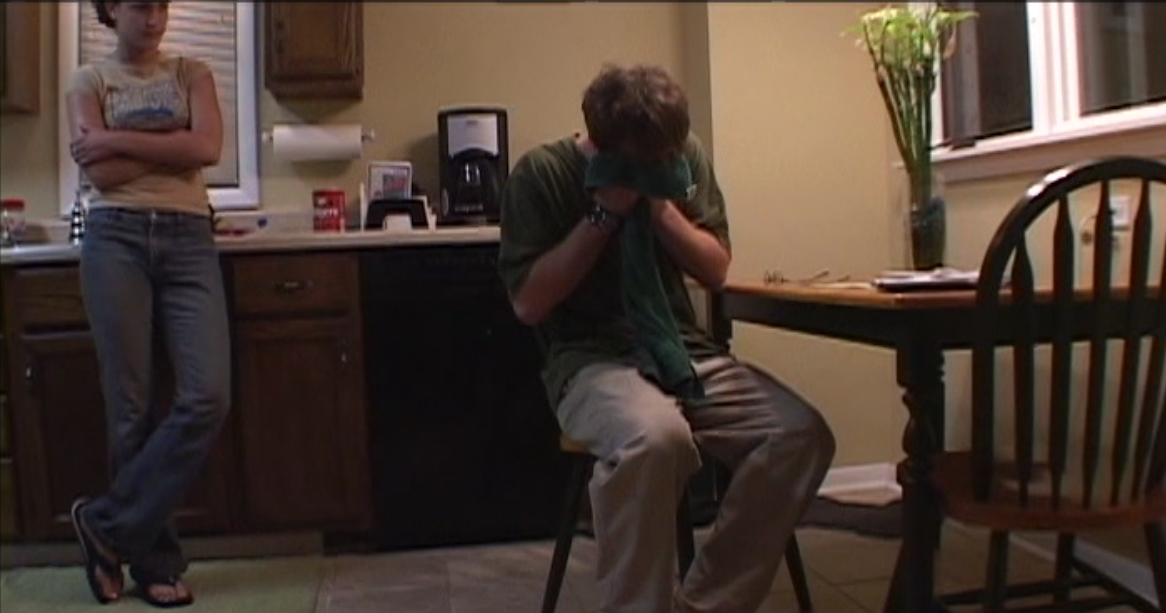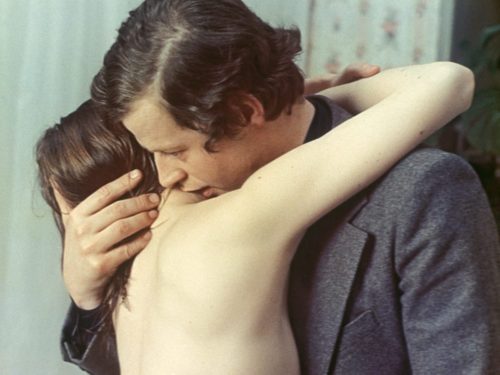“It is awful to look into the mind of man & see how free we are — to what frightful excesses our vices may run under the whited wall of a respectable reputation. Outside, among your fellows, among strangers, you must preserve appearances, — a hundred things you cannot do; but inside; — the terrible freedom!” — Ralph Waldo Emerson, journal entry dated Oct. 2, 1832
Quietly on By begins just as 24 year-old Aaron Riley (Anthony J. Baker) suffers a severe nervous breakdown. The rest of the film takes place in the aftermath. In his fragile state, Aaron dawdles through his days like he is lost in his own head. He spends the majority of his time at home while his family goes to work. Living with his mother (Denise Blank) and younger sister, also named Erin (Jennifer Knox), he does a few chores here and there, but he mostly concerns himself with distractions, such as building a tire swing and pining over his crush Sara (Danielle Ostrowski) who already has a boyfriend. Socially, Aaron is incredibly anxious; he rehearses and records multiple voicemails when calling his best friend Eric (Lonnie Phillips) and appears oblivious to the most blatant social cues — like when he accepts a barely half-hearted invitation to third-wheel on Sara’s date-night. He has a short fuse and is overwhelmed easily, leading to some unnerving encounters and questionable decisions. Throughout all of this, Aaron also grows increasingly paranoid over repeated sightings of a white SUV, whose driver may or may not be stalking him with sinister intentions.
When Frank V. Ross started work on Quietly on By, his third film, he was 24 years old, living in his mother’s house in the Chicago suburbs and feeling dissatisfied with his previous filmmaking efforts. He had completed his first feature, A Story in a Life (1999), when he was just out of high school. He followed that with the more elaborate ensemble piece Oh! My Dear Desire in 2003. A lack of ambition was never an issue, but Ross found these were not the type of films he wanted to be making. Change was needed, and he began reflecting on his frustrations.

Many of the creative leaps Ross made with Quietly on By were matters of subtraction. His two early “unofficial” films (they have since been suppressed by Ross himself) pose big questions about life, love and death, and young Ross tries to match the grave subject matter with melodramatic action. Their narratives are complex, featuring flashbacks, stream-of-consciousness voice-over narration and even a multi-story, interwoven plot structure in Oh! My Dear Desire.
While his early films wear their ambitions on their sleeve, Quietly on By has a slyness to it. The film avoids the more heavy-handed storytelling elements used in his earlier work and tones down the severity of the conflicts faced by his characters. There are still melodramatic elements present in Quietly on By, but Ross displaces it within his narrative, focusing less on how characters react to outstanding crises and more on how they go about their everyday encounters under strained circumstances. The style Ross developed feels loose and off-the-cuff on the surface, but a densely layered narrative complicates Quietly on By’s structure in ways that are not always immediately apparent.
Related: Frank V. Ross: The Split Tooth Interview Pt. 1 — Quietly on By and Hohokam
For better and for worse, Quietly on By arrived on the independent film scene just in time to be swept up in the first wave of “mumblecore.” With its no-budget aesthetics (the film was shot on digital video for around $755), use of non-professional actors and Aaron’s lack of direction guiding the core narrative, Ross’ first “official” film fit in easily with the early work of contemporaries like Joe Swanberg and Andrew Bujalski. Much like the post-collegiate settings in his contemporaries’ films, Quietly on By takes place during a transitional period in Aaron’s life where everything is up-in-the-air. But Aaron is not a recent college graduate with the freedom to explore his options for employment and fumble through romances. His situation is considerably more complicated and Ross’ presentation gives Quietly on By a roughness that is not present in early mumblecore films.
We learn gradually that before his breakdown, Aaron had his eyes trained on a humble, traditionally ordered life — the kind that antagonistic film critics may wish all mumblecore characters would pursue. Aaron was working, he had a serious girlfriend and together they were preparing to buy a house. But one-by-one the elements that brought structure and purpose to Aaron’s life disintegrated, leaving him in an incredibly vulnerable position. With no job or responsibilities to guide him, Aaron lives in a formless haze with no clear path back to social or emotional stability. Quietly on By explores a mind that is left dangerously free to roam but is held back by a stifling inability to express itself. Aaron is shown to have retreated into a sort of protective bubble inside his head, leaving him in an unstable bind between absent-mindedness and a hyper-sensitivity to the most minor of disturbances. Aaron is prone to lashing out with anger when confronted by even the slightest application of pressure.
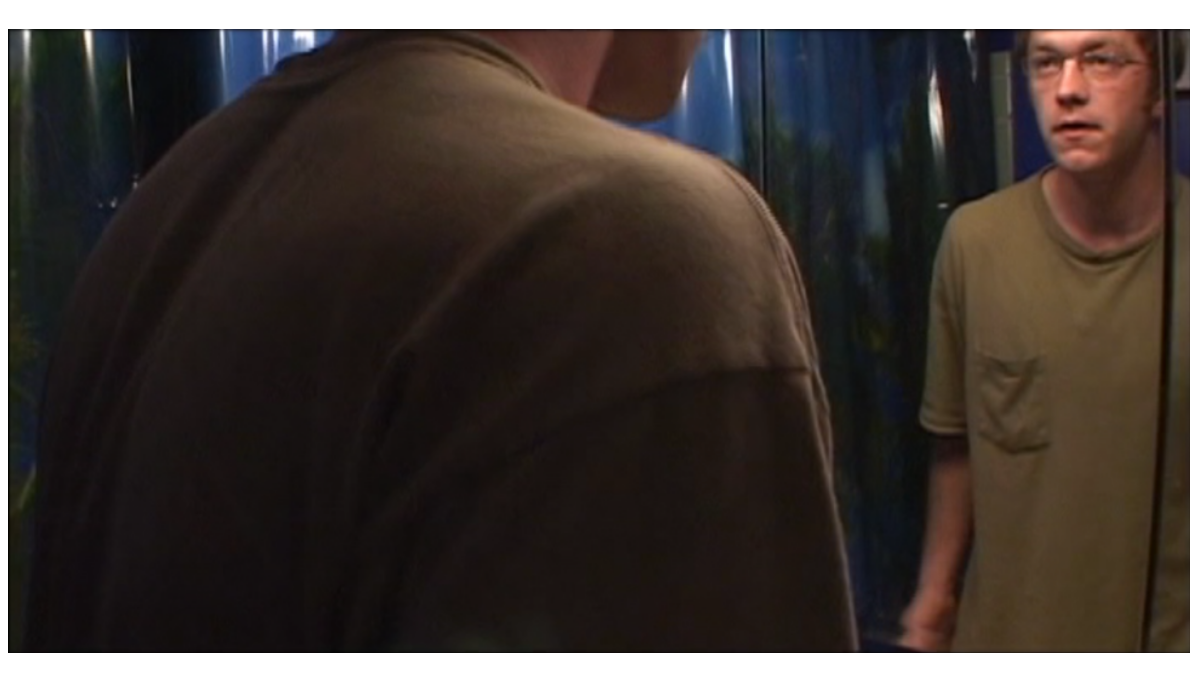
“Tony [Baker] and I were best friends. We both understood in a non-verbal way what needed to fill the frame.” — Frank V. Ross (Courtesy of Frank V. Ross)
There is an it at the heart of Quietly on By — an insufferable, ungraspable thing that cannot be pinned down. As Aaron struggles through his social interactions, grows paranoid and isolated from the world around him, the film builds an anguished tone through unconventional means. Ross notably described Quietly on By before its premiere as a modern take on Jean-Paul Sartre’s Nausea (1938). To anyone familiar with the existential novel — which recounts a writer’s sudden awareness of, and attempts at articulating, the full overwhelming rush of experience — narrative similarities are immediately apparent. Ross even planned to give Aaron a stream-of-consciousness narration written in a style reminiscent of Nausea’s diary form. The voice-over was abandoned at the start of shooting as Ross chose instead to deny such direct access to Aaron’s interior movements.
With this shifting of the drama away from Aaron’s subjectivity, Quietly on By builds the experience — the “nausea” if you will — for viewers to work through themselves. We don’t just hear how isolated Aaron feels from his dialogue or have it merely shown to us through interpretive camera angles. Ross puts us through it with the deeper structuring of his scenes. Utilizing a wildly open frame, the film creates a looming and often foreboding presence to surround its zoned-out character. As we watch Aaron fail to confront and articulate the turbulence around and inside him, Ross urges our attention to creep into the film’s peripheries. Our eyes are drawn out to actions taking place in the background of scenes or guided to details placed along the edges of the frame (watch for those SUVs). Social interactions are often staged to bury Aaron beneath overlapping conversations taking place all at once. Repeated viewings of Quietly on By are rewarding, as elements that come across almost subliminally when first experienced begin to register as part of the greater structure. There is so much happening around Aaron that we begin to recognize how Ross is building the limits and gaps of Aaron’s perception into the film, showing us the consequences of what his character is missing by being so caught up in his own claustrophobic world.
Ross also avoids traditional approaches to exposition. Substantial information is presented in quick cutaways or situated in unconventional places that require us to keep our wits about us as the film pummels forward. Similarly, as other characters try to avoid triggering one of Aaron’s outbursts, dialogue regarding his past is conveyed through vague or suggestive means as friends and family talk around touchy subjects. In this way, Ross puts viewers in a similarly destabilized position as Aaron without subjecting us to his point of view; all of the information we need is often right in front of us, but we have to reestablish our notions of where to look for it. We have to tune in to Ross’ off-kilter vantage points and proceed without the usual ease-of-entry provided by traditional narrative storytelling.
As our understanding of what led to Aaron’s current situation fills in, we do really feel for him as he blunders through social interactions and becomes increasingly isolated. But Ross counters our empathetic efforts by placing Aaron in situations that keep his social miscues, lack of motivation and his more troubling actions in perspective. Quietly on By surrounds Aaron with more traditional “movie” conflicts that take place beyond his perceptual grasp. Ross introduces a series of melodramatic subplots faced by Aaron’s friends and family, involving kleptomania, a teenage pregnancy and a mom ‘n’ pop shop’s financial struggles —all conflicts that would have fit right into his previous features. But Ross allows these dilemmas to lurk in the background. The dramatic emphasis is placed on Aaron’s less-urgent endeavors. These more severe conflicts are experienced tangentially, alluded to in brief cutaway shots, referenced in conversational asides within the flow of dialogue, or suggested by an item piled into a cluttered frame. For instance, as Aaron builds his tire swing with friends in the yard, his sister is sneaking into his room to steal money from him; as he eats pudding at his kitchen table, he half-listens as his mom complains about the struggles of owning a small business. Aaron shows signs of recognizing these issues, but he rarely engages with them unless they are forcefully brought to his attention.
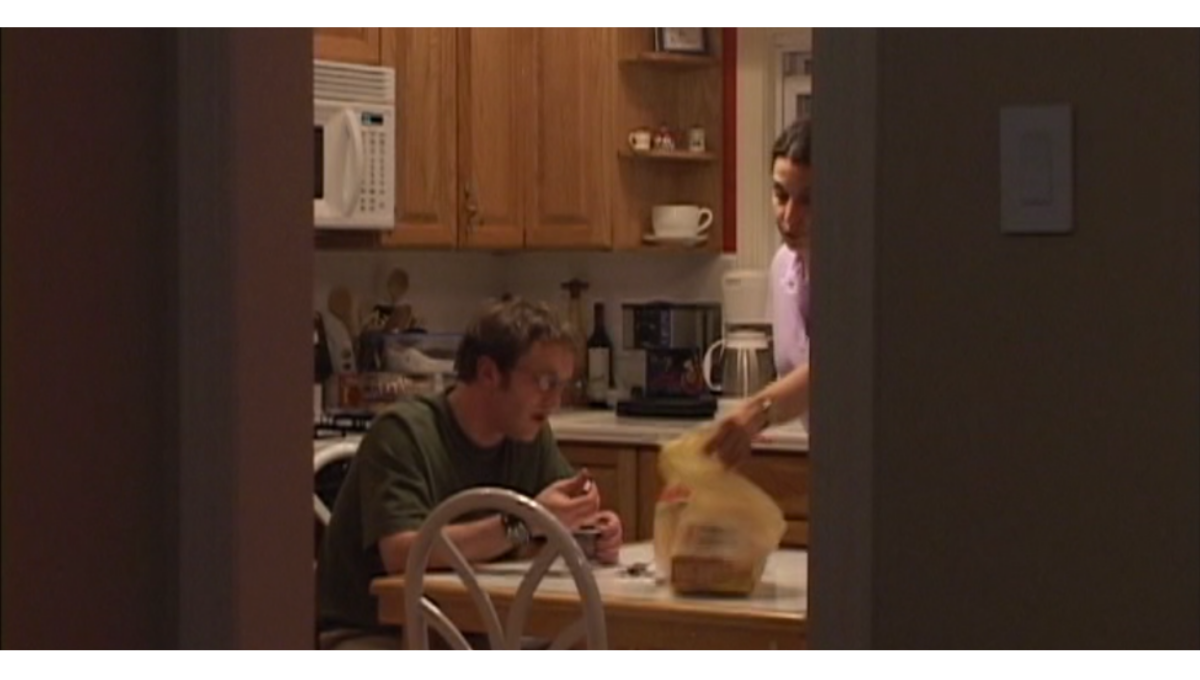
His relationships with friends and family further complicate our understanding of Aaron’s situation. His friends often have to plan for their interactions with him behind his back, or else dig him out of awkward social encounters. They clearly care for Aaron, but they have their own needs and problems to deal with. Eric is a loyal friend, but he also sells drugs to Aaron’s sister behind his back, likely knowing where she got the money. Aaron’s mother offers her son a sincere but cliched pep talk about picking himself back up, but her advice takes on added weight as we recognize the financial pressures she faces daily. She is shown rousing Aaron out of bed and asking for help around the house as she rushes off to her struggling flower shop. [Ross revisits and expands on this type of dynamic in Tiger Tail in Blue (2012), which parallels a wife going to work every morning to pay the bills against her husband staying home to pursue a writing career.]
The most significant structural contrast to Aaron within the film is his teenage sister Erin. While Aaron is surrounded by information he can’t process but we, as viewers, can, Erin processes and acts well before we are given enough information to understand exactly what she is experiencing. When she finds out that she is pregnant, Ross shows her taking immediate action. We see her scheduling appointments and examining her body in a mirror without the film giving us an explanation. When she asks Aaron for help paying for an abortion, she speaks only of accepting the consequences while he hesitates to give her concrete advice. Her deliberateness certainly creates its own share of emotional repercussions, but the film asks us to take into account how everyone around Aaron at least attempts to take their challenges in stride while he slouches away and avoids working through his problems.
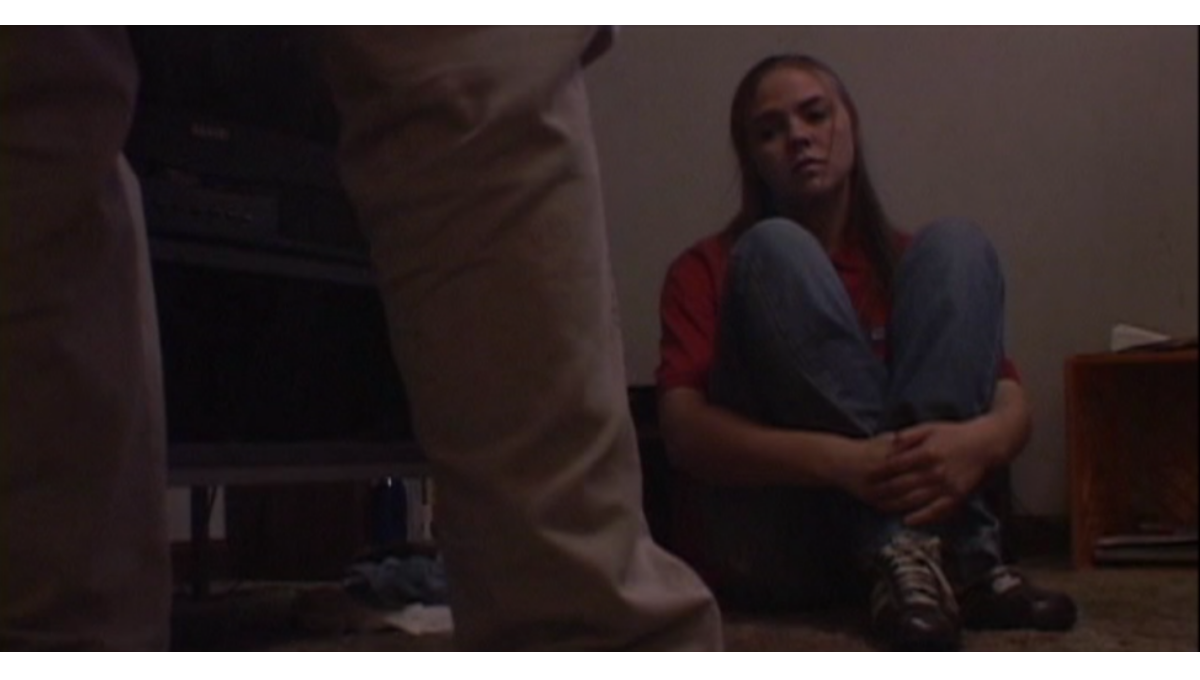
Aaron is also presented with more retaliatory encounters, notably with Sara’s boyfriend, Mike (played by Ross). Mike puts Aaron well out of his comfort zone. When Aaron accompanies Eric and Sara to a house party, he meets Mike and drives him nuts with banal and prying small talk. The encounter is staged so that Aaron’s obsessive focus on his perceived romantic rival curtails the flow of the whole party as he interrogates Mike. Later, when Aaron invites himself over for Sara and Mike’s date night, Mike holds nothing back. He levels Aaron with snark until Aaron retreats to the bathroom to compose himself, shouting insults meant for Mike at his own reflection in the mirror. In his relationship to Aaron, Mike is not a bully. He just doesn’t want Aaron around. Mike has no personal connection to Aaron so he has no reason to uphold the support system that friends and family work so hard to maintain for Aaron. This leaves Aaron to his own devices in a social situation where he has no means of control. He is ultimately left speechless and defenseless.
It is a common dream to be liberated from responsibility and all social tethers, but Quietly on By creates an uneasy awareness of how disorienting it can be to be freed from such obligations and routines, especially when it is all you have ever known. Through Aaron, we see how terrifying it can be to have your perceptions opened up without having the means or ability to recalibrate. Throughout Quietly on By, we see how mentally and emotionally unprepared Aaron was for such drastic changes in his life. He had goals and a sense of responsibility to guide him before his breakdown, but his old crutches are gone and won’t support him anymore. He tries to scratch and scrape together a new sense of order out of the remnants, but it mostly leads to frustration.
The film ends with a note of hope as something seems to spark in Aaron during a tender moment shared with his sister. After Quietly on By, Ross began focusing on characters caught up in their working lives. It is safe to bet that Aaron will eventually shuffle into just such a life, finding a job and moving out of his mom’s house. There is a striking resemblance between Aaron and one of Ross’ later characters, Ron (also played by Baker) from Audrey the Trainwreck (2010). Ron could easily be Aaron a few years on, settled into a career but just as confused, relying on a strict daily routine to focus his energies away from his frustrations. Ron’s 9-to-5 tunnel vision is more-or-less a socially acceptable form of Aaron’s bubble consciousness. Quietly on By catches Ross staking a claim early in his career by challenging the sanctity of a quiet, “normal” American life. His films aggravate and irritate our complacencies, reviving our perceptions and re-sensitizing our understanding of where we stand in the grand scheme of the wide and wild world around us.

Follow our series on the Films of Frank V. Ross here:
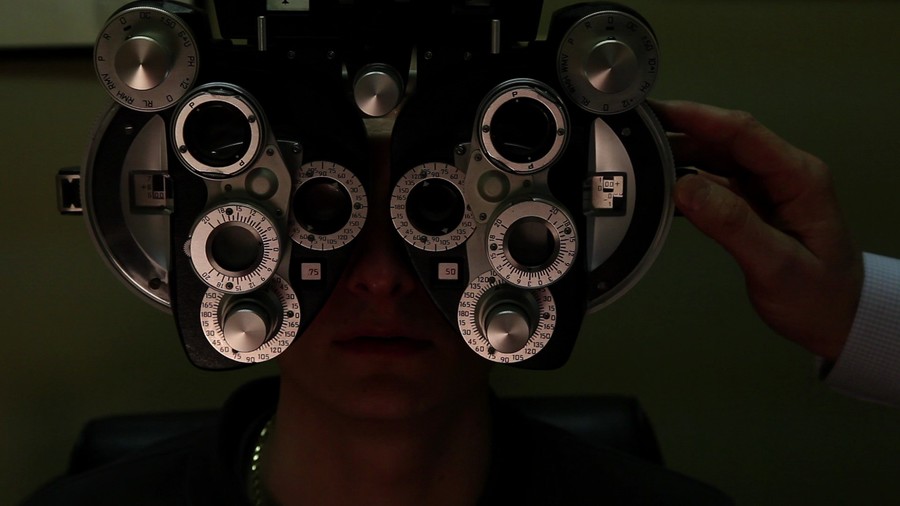
Follow Brett on Twitter and Letterboxd
(Split Tooth may earn a commission from purchases made through affiliate links on our site.)

